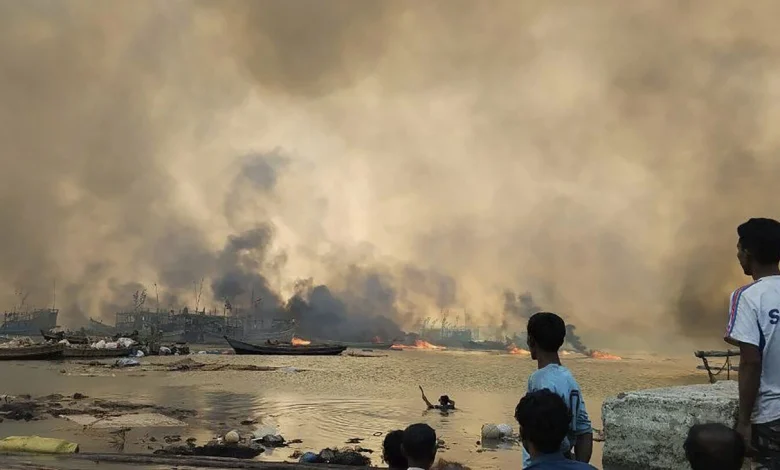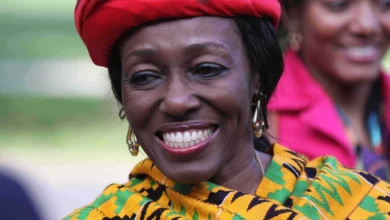
China, India Alert as Myanmar Rebels Near Strategic Frontier
The Arakan Army (AA) has transformed the power balance on Myanmar’s strategic western frontier while China and India observe the rebels’ advance. The AA now controls 14 of 17 townships in Rakhine state. This most important region borders Bangladesh and sits on the Bay of Bengal, where the group has gained unprecedented territorial control. The Myanmar military’s blockade has created a humanitarian crisis. More than two million people now face starvation risks[-2].
The crisis along Myanmar’s border with India threatens regional stability and the relationship between both nations. The World Food Program reports a sharp rise in food insecurity. About 57 percent of central Rakhine’s families cannot meet their simple food needs, up from 33 percent in December[-2][-3]. Military air strikes have claimed 402 civilian lives between late 2023 and mid-2025. These casualties include 96 children[-2]. The crisis has triggered massive population movements. UN data shows 150,000 new refugees have reached Myanmar-Bangladesh border camps in the last 18 months. These new arrivals join over one million already displaced Rohingya[-2].
Arakan Army seizes control of key Rakhine townships
Image Source: Burma News International
“In the course of a decade, the AA has become one of the country’s most powerful and successful organizations despite being the newest of Myanmar’s ethnic armed groups.” — Stimson Center, Leading think tank on international security
The Arakan Army has steadily gained control over Rakhine State’s western frontier since late 2023. This ethnic armed group now holds unprecedented power in this key region next to Bangladesh.
Rebels claim 14 of 17 townships in western Myanmar
The AA’s offensive began in November 2023 and now controls 14 of Rakhine’s 17 townships. Their expansion now covers the entire 271-kilometer border with Bangladesh. The rebels captured several key spots, including Mrauk-U—the ancient Arakan kingdom’s historic capital—on February 8. This victory held special meaning that boosted their support among ethnic Rakhine people. The group scored a major win on December 20, 2024, by taking over the military’s Western Command headquarters in Ann Township. The AA has systematically taken control of battalion bases, police stations, and military outposts across the region.
Sittwe and Kyaukphyu emerge as next targets
The military still controls just three townships: Sittwe (the state capital), Kyaukphyu, and Manaung. Instead of direct attacks on these places, the AA surrounds them, especially Kyaukphyu. The rebels now control the road between Kyaukphyu town and Danyawaddy after capturing three military positions along this route. The military defends these strategic spots with increased naval and air operations, especially Kyaukphyu. This area houses important Chinese energy infrastructure and a planned deep-sea port that’s crucial to China’s Belt and Road Initiative.
Analysts predict monsoon offensive
Military experts think the AA will launch a major offensive between September and October 2025. They plan to use monsoon season’s cloudy skies to avoid military air strikes. The AA has gathered lots of weapons from captured bases throughout 2024, but these supplies might run low by 2026. The rebels need to act quickly to use their advantage. Defense analyst Anthony Davis says about 3,000 government troops defend Kyaukphyu with support from jets, drones, and naval firepower. The AA’s force has grown to 40,000 fighters after recent recruitment, and they could send up to 10,000 troops to capture the port.
Myanmar military escalates airstrikes and conscription
Image Source: AP News
The Myanmar military has stepped up its offensive operations through airstrikes and mandatory conscription as it faces territorial losses.
Air raids kill over 400 civilians, including children
Air raids in Rakhine State killed 402 civilians and 96 of them were children between late 2023 and mid-2025. The United Nations Children’s Fund documented five airstrikes across Myanmar that killed 24 civilians in September, and at least 10 were children. These attacks damaged schools, religious buildings, and camps for internally displaced persons. Military air strikes killed 28 people and injured 25 others in Rakhine’s Mrauk-U Township during January 2025. The death toll reached its highest point since the 2021 coup with 1,824 civilians killed nationwide in 2024, including 531 women and 248 children.
Military drafts 70,000 new troops
The junta started enforcing its military conscription law in February 2024. Men aged 18-35 and women aged 18-27 must serve up to two years. The regime has recruited about 70,000 new personnel in 14 batches since then. Defense Minister General Maung Maung Aye confirmed that 11 batches completed training by July 2025, and three more batches continue their training. Former military officer Naung Yoe pointed out that conscription helped the regime recruit five times its pre-coup annual average. Many young people have fled abroad or gone into hiding to avoid service.
AA launches its own conscription drive
The Arakan Army enacted its National Defense Emergency Provision on March 18, 2025, making military service mandatory. Men aged 18-45 and women aged 18-25 must undergo training and serve at least two years. The AA has banned eligible individuals from leaving Rakhine State “until the emergency period caused by the ongoing conflict ends”. The AA’s forces now exceed 30,000 troops, and Twan Mrat Naing claims their numbers grew to at least 45,000 by June 2024. Several villages have seen protests against the conscription drive, leading to multiple arrests.
India and China reassess Myanmar border strategies
Image Source: Insightful Geopolitics
“It is apparent that AA has the support of the people. No strategy would be effective without support.” — Aung Kyaw Kyaw, Police Chief, Rakhine State
Power dynamics have changed dramatically in Myanmar’s western frontier, and both regional powers must adjust their strategic approaches. Rebel groups now control territories vital to China and India’s economic and security interests, which creates complex challenges for both nations.
India-Myanmar border security under pressure
Violence has spilled across India’s northeastern frontier and created mounting security concerns. Local resources in states like Mizoram and Manipur feel the strain from the refugee influx. Plans to fence the frontier and restrict border crossings contradict India’s Act East policy that aims to boost connectivity with Southeast Asia. The instability has given insurgent groups operating along the border new opportunities, which makes India’s counterinsurgency efforts more difficult.
China hedges bets on both junta and rebels
Beijing uses a sophisticated two-track strategy. They maintain formal ties with Myanmar’s military regime while quietly working with ethnic armed organizations. This approach helps China protect its Belt and Road investments, especially the Kyaukphyu port and economic corridor to southern China. Chinese officials have brokered deals with both the junta and the Arakan Army, and reports suggest they allow Chinese security personnel to protect these assets.
India quietly engages with AA over Kaladan project
India has expanded its contacts with the Arakan Army after focusing on relations with Naypyidaw. Indian officials met with AA representatives in New Delhi and Aizawl by mid-2024. They acknowledged the rebels’ control over the Myanmar segment of the Kaladan project, with Sittwe being the only exception. India has suggested providing electricity across the border to Paletwa township, which the AA now controls.
Kyaukphyu port becomes flashpoint in regional rivalry
Image Source: Eurasia Review
The strategic port of Kyaukphyu has become a crucial flashpoint where Beijing and New Delhi’s rivalry intensifies as both powers watch Myanmar rebels advance near their vital infrastructure investments.
China’s Belt and Road assets at risk
The $7.3 billion Kyaukphyu deep-water port and $2.7 billion industrial area in Rakhine State are the life-blood projects of China’s Belt and Road Initiative. Chinese state-owned CITIC Group holds a 70% stake in the port. This strategic asset lets China access the Indian Ocean directly and bypass the vulnerable Strait of Malacca for oil imports. The twin oil and gas pipelines that connect Kyaukphyu to China’s Yunnan province transport about 5% of China’s crude oil imports. The Institute for Strategy and Policy-Myanmar reported that the AA now controls all but one of China-backed projects in Arakan valued at tens of billions of dollars.
India’s Kaladan project faces disruption
India’s competing Kaladan Multi-Modal Transit Transport Project lies just 85 kilometers from Kyaukphyu. This initiative wants to connect India’s landlocked northeastern states through Sittwe port to the Bay of Bengal and create an alternative route that bypasses Bangladesh. The AA now controls all regions where the Kaladan River flows, except Sittwe. Recent political changes in Bangladesh have made this project more urgent for New Delhi.
AA pledges to protect foreign investments
The United League of Arakan, the AA’s political wing, has officially promised to safeguard both Chinese and Indian investments. “We will provide special protection and security measures for investment operations, projects, and safeguard personal safety of investors,” stated the ULA/AA. Nearly 50 Chinese security personnel stay in Kyaukphyu, and Beijing seems to accept the possibility of AA capturing the facility—as long as its assets remain protected. The AA describes Kyaukphyu as a “sensitive area” where it uses “the least amount of force necessary”.
The Arakan Army’s quick advances through Rakhine state have changed the power balance on Myanmar’s western border. This transformation has pushed regional powers to adjust their strategy while civilians face dire humanitarian conditions. Myanmar’s military holds just three townships but continues its air attacks. These bombings have killed hundreds of civilians and nearly a hundred children. Both sides now force people to join their ranks, which makes the conflict even more militarized.
China and India watch nervously as their multi-billion-dollar investments hang by a thread. Both countries now play it safe by keeping official ties with Myanmar’s junta while opening talks with the AA. The port of Kyaukphyu stands as the life-blood of China’s Belt and Road Initiative. India’s Kaladan project provides crucial links to its northeastern regions.
The AA’s promise to protect foreign investments shows their grasp of regional politics rather than just ideology. Military experts believe the rebels will launch major attacks soon to use their advantage before resources run low. The humanitarian crisis grows worse as over two million people risk starvation and more refugees flee toward Bangladesh.
This conflict has grown beyond Myanmar’s borders into a complex regional crisis that will affect South and Southeast Asian security. Its outcome could change the power structure around the Bay of Bengal for decades.






